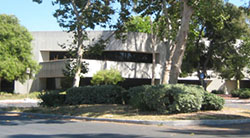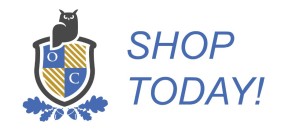Language Arts
Persuasion
This unit for grades 6–7 highlights elements of persuasion, especially as it relates to oral communication. Students must cite passages from literature to defend their points of view in discussion as well as in written arguments. Literature selections such as “The Valiant,” “The Pied Piper of Hamelin,” and the Declaration of Independence frame the basis for exploring the reasoning process through analysis and interpretation. Opportunities are presented for impromptu, informative, and persuasive speeches; debate; small- and large-group discussion; and critical reasoning. Persuasive writing, reasoning, research, and language study are included throughout the unit.
The 1940’s: A Decade of Change
This unit for students looks at the historical events and social issues of the 1940s through the literature of the decade, including novels, short stories, poetry, essays, letters, and newspapers. Numerous opportunities for reading, writing, listening, linguistic competency, and speaking are incorporated into the unit. Each student is required to pose a hypothesis and conduct research concerning some issue of significance that arises from the literature that is studied. Students make both a written and an oral presentation of their research. The unit is rich in materials that highlight the concept of change, including works such as Hersey’s Hiroshima, The Diary of Anne Frank, and Spiegelman’s Maus II.
Utopia
This unit for grades 7–9 provides an overview of utopia as seen by various individuals, groups, and countries and gives students an opportunity to examine why ideas about utopia undergo change. Through the study of literature, art, music, and other classroom activities, students learn about the search through the ages for utopia and the struggles to grasp and maintain it on both personal and societal levels. Exploring utopia through personal dreams and goals allows students to analyze the literature they read more thoroughly throughout this unit. Literature selections include Orwell’s Animal Farm, Lowry’s The Giver, Twain’s “The Man That Corrupted Hadleyburg,” and poetry by Cavalli and Enzensberger.
Reading:
Jacob’s Ladder is a learning journey for students, which begins with targeted readings from fables, myths and nonfiction sources and moves through an inquiry process from basic understanding to critical analyses of the texts read. There are five levels available that are targeted to students in grades 2 to 9, but can be used at different grade levels depending on student ability. The units are designed to enhance reading comprehension. Tasks have been organized by skill ladders with questions and activities within each. Ladder rungs are organized to increase complexity in intellectual demand. The skill ladders in Jacob's Ladder correspond with the higher level, critical thinking skills targeted in the William & Mary language arts units
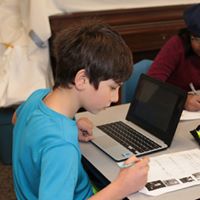

Mathematics
Moving Through Dimensions approaches spatial reasoning through one-dimensional, two-dimensional, and three-dimensional tasks designed for students in grades 6–8. The unit also asks students to explore the transition between dimensions and representations of three-dimensional objects in two dimensions. This book includes pre- and post assessments, multiple reproducible materials, and lessons based on NCTM standards. Pre-algebra, Algebra and Geometry are also taught during the course of Middle School and students move at their own pace.
Science
Nuclear Energy
This unit for students in grades 6–8 creatively explores the effects of nuclear power waste. The topic is introduced through the eyes of a mayor of a town where a nuclear power plant is located. She must decide if the facility can expand its waste disposal techniques. What are the biological implications of radiation? What are the trade-offs with which society must live as we accept nuclear technologies into our lives? Students explore these questions as they prepare to make recommendations about the use of the nuclear power plant in their fictitious town.
No Quick Fixes
This unit uses systems as the fundamental concept to help students understand cell and tuberculosis biology. In a series of widening concentric circles, students in grades 6–8 learn that the cells are elements in larger systems, such as the immune system of the human body. Students also interact with human social systems, including health care and public education. Students take on the role of physician and begin to search for the cause and resolution of the problem. While unraveling the interactions among various systems, students can appreciate the complexities of staying healthy in the modern world.
Something Fishy
This unit poses an ill-structured problem that will lead students in grades 6–8 into an interdisciplinary study about several individual systems and their interactions. The content of the unit focuses on the various systems involved in the pollution of a local body of water: the aquatic ecosystem, chemical reaction systems, government systems, and economic systems. Students are challenged to grapple with real-world concerns and develop recommendations through simulation activities based on the scientific process.
Animal Population
This unit integrates population biology and mathematics. The ill-structured problem puts students in grades 6–8 in the stakeholder role of assistant to the mayor of a small town in which residents are demanding that something be done about the deer that are eating their landscaped plants. Throughout the unit, students deal with physical models, conceptual models, and mathematical models as they tackle the deer problem and the complication of Lyme disease.
Middle school students will also learn Chemistry throughout the year.
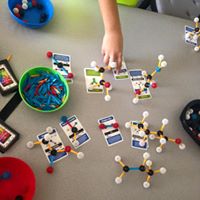

History
Exploring America in the 1950’s
This is an interdisciplinary humanities unit for students in grades 6–8 that looks at literature, art, and music of the 1950s to provide an understanding of how those living through the decade experienced and felt about the world around them. Through the lens of “identity,” it explores life in America and the myriad groups that coexisted in harmony and, often, with friction. Cultural icons like Elvis and the Beat poets are examined alongside larger issues such as the Cold War, conformity, and Civil Rights struggles.
Exploring America in the 1960’s
For students in grades 6–8, this is an interdisciplinary humanities unit that looks at literature, art, and music of the 1960s to provide an understanding of how those living through the decade experienced and felt about the many social changes taking place around them. Through the lens of “identity,” it explores why these changes occurred and lends an ear to the voices of the groups that clamored for them. Cultural icons like the Kennedys, the Beatles, Andy Warhol, and the Beach Boys are examined alongside larger issues such as the Civil Rights and women’s rights movements and the Vietnam War.
The Road to the White House
The concept of systems forms the basis for this exploration of American government, particularly focused on the processes involved in the election of the President and the constitutional context of these processes. Students in grades 6–8 investigate the chronology of campaign and election and study documents and statistics related to Presidential elections in American history. In addition, the unit explores the concept of leadership as it emerges both in the process of being elected and in the context of being a President.
Social and Emotional
TOOLBOX™ is a Kindergarten through 6th grade program that supports children in understanding and managing their own emotional, social, and academic success. The foundation of TOOLBOX is 12 human capacities that reside within all of us. Through its simple and profound metaphor of Tools, TOOLBOX brings forward a set of skills and practices that help students access their own inner resilience at any time, in any context.
Children learn 12 simple yet powerful Tools. With practice, these Tools become valuable personal skills: self-awareness, self-management, and relationship-building which, in turn, foster responsible decision-making. Because the techniques are simple and the language is shared, children adopt the Tools and master them quickly. TOOLBOX begins with a teacher providing instruction on how to use the Tools. Through modeling and daily classroom practices, the teacher subsequently supports his/her students to use the Tools to build self-knowledge and self-trust. Schools note rapid improvements in communication, civility, and conflict resolution in the classroom, on the playground, and across the entire school community. Providing parents and caregivers with the Tools and information on how to incorporate the practices into the home setting allows for continuity and reinforcement of skills for students.


Foreign Language
At Oak Crest Academy, we recognize that the ability to speak more than one language considerably heightens one’s ability to learn, lead, and love. Every day, our nurturing educators teach grade-level curriculum in Mandarin and English, to children who are as diverse as they are curious about the physical world they live in.
Foreign Language involves the instruction of academic subject areas through a target language, such as Mandarin, for at least 50% of the school day, and English for the other part of the day. Foreign Language teachers speak only the target language and use a variety of techniques to ensure that the students understand the concepts and directions. In K/1 our students are exposed to Mandarin in language class, as well as other classes throughout the day.
Physical Education
Daily activity and nutritional choices are central to balanced, healthy lives. Not only do students have formal PE classes twice a week, teachers incorporate movement into their lessons.
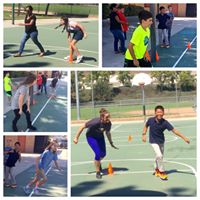

Project Based/Co-Curricular
During this time, classes are focused on class-wide or individual projects as well as offering co-curricular options like computer programming, arts, theater, music, Odyssey of the Mind, gardening, cooking, study hall and more.
*Please note that units fluctuate each year and every unit is not taught each year.
Is a Gifted Program Right For Your Child?
Contact Us Today to Take the Gifted Child School Readiness Quiz
Identify goals, strengths and important facts about gifted child education so you can make an informed decision for your family. Contact Us Today.
Middle 6-8 Daily Schedule
8:30-9:30 AM
Science/Spanish Rotation
9:30-9:45 AM
Break
9:45-10:45 AM
Math
10:45-11:45 AM
ELA
11:45-12:45 PM
History/Health Rotation
12:45-1:15 PM
Lunch
1:15-2:00 PM
Innovation/Projects/Study Hall Rotation
2:00-3:00 PM
PE /Co-Curricular


